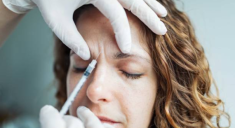A facial plastic surgeon is a medical expert specializing in improving the appearance and function of the face through aesthetic and reconstructive procedures. Aesthetic treatments, such as rhinoplasty, facelifts, and eyelid surgery, enhance facial features, while reconstructive procedures help restore normal appearance after injuries or medical conditions. Expert recommendations from surgeons are based on medical research and long-term effectiveness, ensuring safe and natural-looking results. Unlike general beauty tips, a surgeon’s advice is personalized, focusing on proven treatments rather than temporary fixes. They offer solutions tailored to an individual’s facial structure, skin type, and goals. Consulting a qualified facial plastic surgeon ensures safe, customized recommendations for those considering facial enhancements or corrective procedures.
Essential Skincare Advice from a Facial Plastic Surgeon
Taking care of your skin is an important part of maintaining a youthful and healthy appearance. Facial plastic surgeons often recommend a skincare routine based on medical expertise rather than popular beauty trends. Here are some key aspects of skincare that surgeons focus on.
Medical-Grade Skincare vs. Over the Counter Products
Many people use over-the-counter skin care products available in stores, but these may not always be effective for deeper skin concerns. Medical-grade skincare products contain higher concentrations of active ingredients and are often backed by clinical research. These products penetrate deeper into the skin, providing long-term benefits rather than just temporary improvements. Facial plastic surgeons often recommend these because they are designed to treat issues like acne, pigmentation, and aging signs more effectively than regular drugstore products.
Importance of Sun Protection
One of the most essential skincare recommendations from surgeons is the use of sunscreen every day. Sun exposure is a major cause of premature aging, wrinkles, dark spots, and even skin cancer. A good broad-spectrum sunscreen with SPF 30 or higher protects the skin from harmful UV rays and helps prevent damage. Dermatologist-approved sunscreens are often free from harmful chemicals and offer better protection than cosmetic sunscreens found in makeup products. Surgeons emphasize that applying sunscreen should be a daily habit, even on cloudy days or when staying indoors near windows.
Choosing Skincare Based on Skin Type
Everyone’s skin is different, and using the wrong products can cause irritation, breakouts, or dryness. Facial plastic surgeons analyze a patient’s skin type before recommending treatments or skincare routines. People with oily skin may benefit from lightweight, oil-free moisturizers and salicylic acid-based cleansers, while those with dry skin need hydrating products with hyaluronic acid and ceramides. Sensitive skin requires gentle, fragrance-free formulations to avoid irritation. Knowing your skin type helps in selecting the right treatments for better long-term results.
Non-Surgical Procedures Recommended by Surgeons
For people who want to improve their facial appearance without undergoing surgery, facial plastic surgeons offer a variety of non-surgical treatments. These procedures can reduce wrinkles, improve skin texture, and restore a youthful look without the need for long recovery times.
Botox and Dermal Fillers for Wrinkle Reduction
Botox is one of the most popular treatments for reducing fine lines and wrinkles, especially on the forehead and around the eyes. It works by relaxing facial muscles, and preventing deep lines from forming. The effects typically last for three to six months.
Dermal fillers, on the other hand, restore lost volume in areas like the cheeks, lips, and under the eyes. As people age, the skin loses collagen and fat, leading to a sunken or tired look. Fillers help to plump up these areas, creating a more youthful and refreshed appearance. These treatments are quick and require little to no downtime.
Chemical Peels and Laser Resurfacing for Skin Rejuvenation
Chemical peels use a solution that removes the outer layer of dead skin, revealing fresher and brighter skin underneath. They help treat issues like acne scars, pigmentation, and fine lines. Peels come in different strengths, from mild to deep, depending on the level of skin correction needed.
Laser resurfacing is another popular non-surgical procedure that improves skin texture and tone. It targets fine lines, wrinkles, and sun damage by stimulating collagen production. Some lasers also help reduce scars and discoloration, making the skin appear smoother and more even-toned. These treatments require minimal downtime but can have dramatic improvements when done correctly.
Microneedling and PRP Therapy for Collagen Boost
Microneedling is a treatment that uses tiny needles to create micro-injuries in the skin. This process stimulates the body’s natural healing response, leading to increased collagen production. As a result, the skin becomes firmer, smoother, and more youthful.
When combined with Platelet-Rich Plasma (PRP) therapy, the results are even better. PRP involves using the patient’s blood to extract growth factors, which are then applied to the treated skin. This speeds up healing and enhances skin regeneration, reducing the appearance of scars, wrinkles, and enlarged pores.
Ultherapy and RF Treatments for Skin Tightening
For those who want firmer skin without surgery, Ultherapy and radiofrequency (RF) treatments are great options. Ultherapy uses ultrasound energy to tighten the deeper layers of the skin, stimulating collagen production. This treatment is commonly used on the face and neck to lift sagging skin.
RF treatments work similarly but use radiofrequency energy instead of ultrasound. These treatments help to firm loose skin, reduce wrinkles, and improve facial contours over time. Since these procedures are non-invasive, there is no need for recovery time, and the results develop gradually over several months.
Surgical Procedures Recommended for Facial Enhancement
Facial plastic surgeons offer various surgical procedures to improve facial appearance and balance. These surgeries are designed to enhance features, correct imperfections, and sometimes improve function. Here are some of the most common procedures recommended by experts.
Rhinoplasty: Reshaping the Nose
Rhinoplasty, also known as nose surgery, is one of the most popular facial procedures. Some people choose it to improve the appearance of their nose, making it more symmetrical or proportionate to their face. Others undergo rhinoplasty to fix breathing issues caused by a deviated septum or nasal obstruction. The procedure can refine the nasal bridge, reshape the tip, or adjust the size of the nostrils. Recovery usually takes a few weeks, with swelling gradually reducing over time.
Facelift and Neck Lift: Restoring Youthful Contours
A facelift is a surgical procedure that helps reduce wrinkles and sagging skin on the face. It tightens the skin and underlying muscles, creating a more youthful and refreshed appearance. Many people combine a facelift with a neck lift, which improves sagging skin and wrinkles around the neck and jawline. These procedures are ideal for individuals who have lost skin elasticity due to aging. The results can last for many years, making them a long-term solution for facial rejuvenation.
Eyelid Surgery (Blepharoplasty)
Eyelid surgery, or blepharoplasty, is performed to remove excess skin, fat, and muscle from the upper and lower eyelids. Droopy eyelids and under-eye bags can make a person look tired or older than they are. This procedure helps refresh the appearance of the eyes, making them look more open and alert. In some cases, it also improves vision by removing heavy, sagging skin that may be blocking eyesight. Recovery is usually quick, and the results provide a natural, youthful look.
Chin and Jawline Augmentation
A well-defined chin and jawline contribute to a balanced and attractive face. Some people naturally have a weak chin or an uneven jawline, which can affect facial proportions. Chin augmentation uses implants or bone reshaping to create a stronger, more defined chin. Jawline contouring enhances the lower face, making it look more structured and proportional. These procedures help achieve better facial harmony, especially when combined with other treatments like rhinoplasty or facelifts.
Otoplasty (Ear Reshaping)
Otoplasty is a surgical procedure that reshapes the ears to improve their appearance. Some people have ears that stick out too far from the head, while others may have uneven or misshapen ears due to genetics or injury. This procedure helps reposition or reshape the ears, creating a more balanced and natural look. The surgery is commonly performed on both children and adults, and the results are permanent.
Post-Procedure Care: A Surgeon’s Best Advice
Proper aftercare is essential for a smooth recovery and the best possible results. Following a surgeon’s advice can help minimize discomfort, speed up healing, and prevent complications.
Managing Swelling, Bruising, and Discomfort
After surgery, it is normal to experience some swelling and bruising. Applying cold compresses can help reduce swelling in the first few days. Keeping the head elevated while resting also helps with faster healing. Pain medications prescribed by the surgeon should be taken as directed to manage discomfort.
Proper Wound Care and Hygiene
Keeping the surgical area clean is important to prevent infections. Surgeons provide detailed instructions on how to clean and care for incisions. It is important to avoid touching or picking at the healing area to prevent scarring. Avoiding makeup and skincare products on the surgical site until fully healed is also recommended.
Importance of Follow-Up Appointments
Regular follow-up visits with the surgeon are necessary to monitor progress and ensure proper healing. These appointments allow the surgeon to check for any signs of complications and make adjustments if needed. Patients should report any unusual pain, swelling, or signs of infection immediately to their doctor.
Long-Term Aesthetic Maintenance: A Surgeon’s Preventative Approach
Maintaining a youthful and healthy appearance requires more than just cosmetic procedures. A facial plastic surgeon recommends adopting good habits to slow down aging and preserve skin quality over time.
Healthy Lifestyle Choices for Better Skin
Eating a balanced diet rich in vitamins, minerals, and antioxidants helps keep the skin firm and glowing. Foods like leafy greens, berries, nuts, and fish contain essential nutrients that support skin health. Drinking enough water keeps the skin hydrated, reducing dryness and fine lines. Getting enough sleep allows the body to repair and regenerate skin cells, preventing early signs of aging.
Avoiding Harmful Habits That Speed Up Aging
Smoking and excessive alcohol consumption damage the skin and accelerate aging. Smoking reduces blood flow, leading to dull skin and wrinkles, while alcohol dehydrates the skin and weakens collagen. Limiting sun exposure and always using sunscreen prevent premature aging caused by UV rays. A surgeon often advises patients to make these lifestyle changes to maintain the results of cosmetic procedures for a longer time.
Regular Check-Ups for Long-Term Skin Health
Routine visits to a facial plastic surgeon can help monitor skin health and address any concerns early. Non-surgical treatments like Botox, fillers, or laser resurfacing can be used as maintenance treatments to keep the skin looking fresh. A surgeon can also provide personalized skincare recommendations based on skin type and aging concerns.
Choosing the Right Facial Plastic Surgeon
Finding a skilled and experienced facial plastic surgeon is essential for safe and successful procedures. Patients should take the time to research and choose a qualified professional.
Checking Credentials and Experience
A good surgeon should be board-certified in facial plastic surgery and have years of experience performing cosmetic procedures. Looking at before-and-after photos of previous patients helps assess the surgeon’s skills and the type of results they can deliver.
Understanding the Procedure and Recovery Process
Before undergoing any facial procedure, it is important to understand the risks, benefits, and expected recovery time. A reliable surgeon will explain the process clearly, including what to expect during healing and how long the results will last. Patients should have realistic expectations and know that final results take time to appear.
Important Questions to Ask During Consultation
During a consultation, patients should ask about the surgeon’s experience with their specific procedure, the type of anesthesia used, and possible complications. It is also helpful to ask about the cost, aftercare, and follow-up appointments. A trustworthy surgeon will answer all questions openly and provide honest advice about what works best for the patient’s needs.
Conclusion
A facial plastic surgeon’s recommendations go beyond cosmetic procedures. Maintaining a youthful appearance involves making healthy lifestyle choices, avoiding harmful habits, and seeking expert guidance when needed. Choosing a qualified and experienced surgeon is essential for safe and effective treatments. For those considering facial enhancement, consulting a certified facial plastic surgeon is the best way to receive personalized advice and achieve natural, long-lasting results.
















